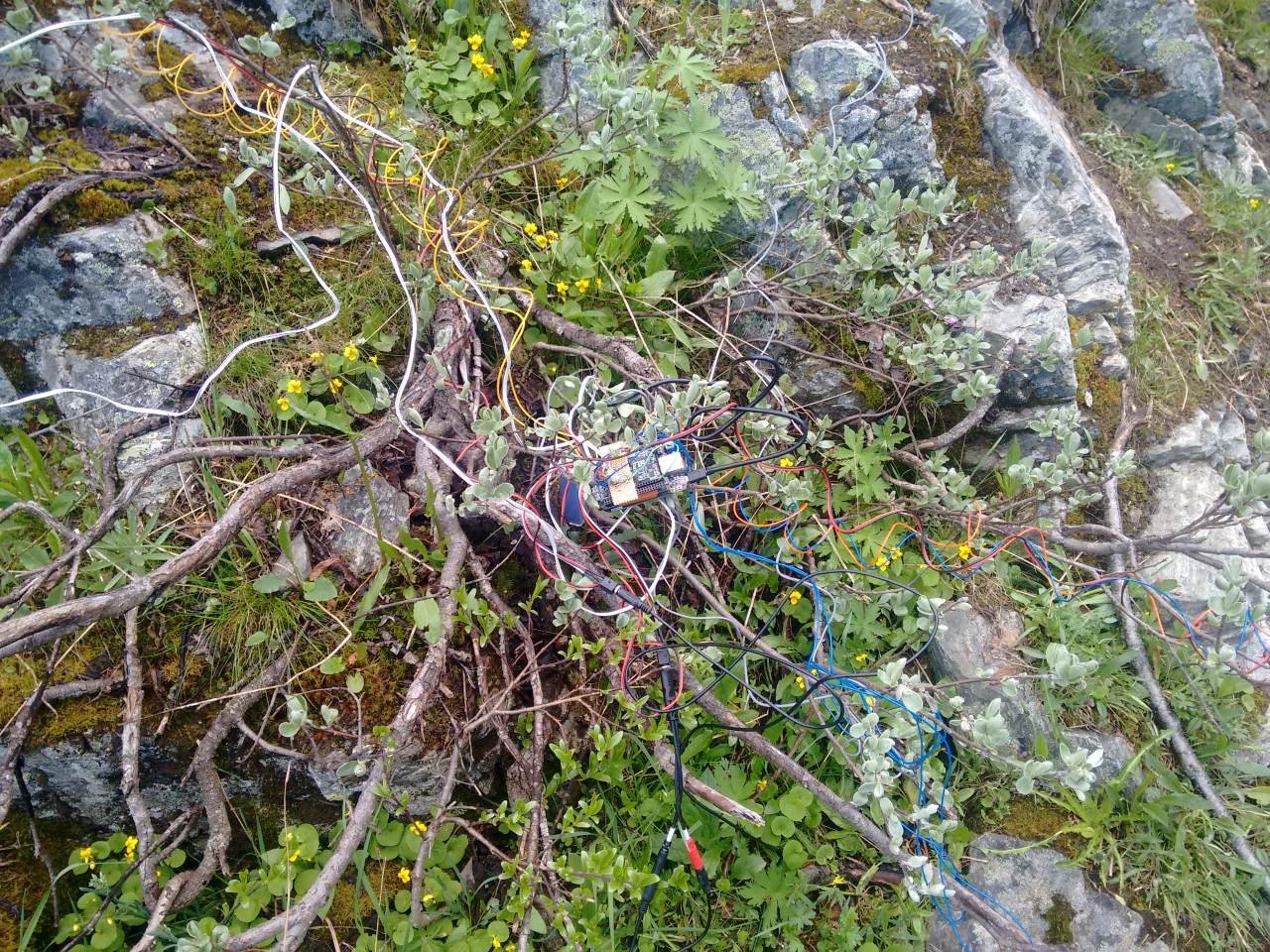Teaching Spotlight
Sound and Textiles: Interface Cultures Masters at University of Arts Linz
In this post Malte Bergmann and Friederike Fröbel share an overview of a course held in January and November 2023 in the Interface Cultures master program at the University of Arts Linz in Austria. During a three-day intensive workshop they explored together the relationship between technology, fashion, sound and design and the potential projects which can be born from their intersection. Over to Malte and Friederike.
Textile interfaces meet found sounds
During the course we first worked with design methods to quickly generate ideas and engage in an intense and collaborative effort. The goal was to design interfaces for meaningful sound interactions using textile processing techniques. Students worked on projects using Bela Mini, Trill Craft and Pure Data. On the textile side, we introduced a broad range of processing techniques, such as sewing, weaving, knotting and embroidering.

Experiments with capacitive sensing and textiles
Every student brought a field recording of a personally meaningful location and a piece of garment or textile to which they had a special attachment. The materials brought in by the students were very diverse. They ranged from fish leather, tummy rumbles, a festive dress, environmental soundscapes, aprons and rattling sounds of train bridges. These materials would be “upcycled” as part of the group work where they were combined into new creations.

After an introductory phase, students formed groups of two to four people and started the ideation process with collaborative sketching. Following that, they recorded the ideas in a short video which they presented to the whole course the following morning. The last day was used to further work on the projects and create a final video and process documentation.

Our decision in this course to consistently combine e-textiles with sound interactions was quite challenging to execute for us and the students. The Bela platform with its good documentation and stability was a strong support here. The moment when the sensor signals could be seen for the first time in the GUI of the Bela Console was an important milestone in the project for all groups. The existing project documentation for the integration of Pure Data and the Trill Craft made it easier for us to support the groups on their design paths. The participants managed to come up with very accomplished results in a short time. We would like to highlight the four projects of the class:
Insomnia


Insomnia is a prototype for an e-textile interactive artwork in the form of a sensory-reactive pillow made from upcycled fabric. It is inspired by issues of anxiety and depression which cause the mind of the person afflicted to be constantly, often subconsciously, mentally busy and never able to fully rest. In the students’ experience, using white noise as a calming and soothing agent effectively counteracts this problem. This artwork uses two sound recordings as white noise: rain sound and fire sound. The patches embroidered with conductive wire on the pillow are capacitive sensors, able to register the pressure applied on every spot. This value controls the volume parameter of sounds played through two speakers placed inside the pillowcase, activating and moving the sounds around depending on the user’s interaction.
Speaking Stomach


Speaking Stomach is a warm belt that hears, records and plays back the sounds of the warming up stomach. The belt has two fur sensors that change the pitch, amplitude and reverberation of the stomach sound recording when touched with the hands. The belt amplifies the relation between the stomach and the user, making it playful and reflecting on the ways in which a person comforts their bellies.
Carpet of memories


In many cultures, there is a tradition to create new pieces of patch work home textiles from scraps and leftover materials from outdated or destroyed garments and fabrics. These textile pieces, created from scraps, have a very personal story behind them. Together they create something at once new and at the same time a memorabilia for family members. In this work, the students wanted to use this concept and create a carpet in the patchwork techniques from upcycled clothes that hold essential memories for each member. By interacting with the carpet, you can also explore audio memories put together in a colourful composition.
Breath Pitch


This device can detect breathing movements and produce a sine wave whose frequency changes according to these movements. It asks how our own breath and the breath of others are perceived? Breath as an interface is suitable to represent transitions that are not tangible - from birth to interpersonal contact until the moment of death. Controlling interfaces with the breath leads to an embodied interaction that is not a tactile touch but a deep breath that leads to touch from within.
Malte Bergmann and Friederike Fröbel would like to thank all participants for the joint inspirational workshop: Salma Ahmed, Yuma Yanagisawa, Catherine Hardman, Alessia Fallica, Maria Konstantinova, Katherine Romero Martinez, Martina Pizzigoni, Maria Dirneder, Viktoria Angyal, Katsuki Nogami.




